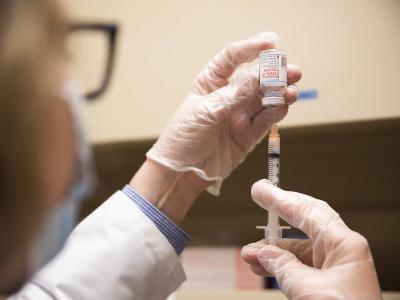Apr 5, 2012 (CIDRAP News) – Lapses in health measures during the second season that the 2009 H1N1 flu virus circulated in England probably contributed to a heavier disease burden—marked by more deaths and hospitalizations—than during the 2009-10 pandemic, researchers reported today.
The authors said the pattern is worrying, especially because the health community and the public knew about the possible impact of the virus and that a vaccine against the new strain was available. The group from the University of Oxford and Imperial College published their findings today in Eurosurveillance.
England had two seasons of high 2009 H1N1 activity, one in 2009 and 2010—the pandemic year—that saw summer and fall waves, and one from 2010 to 2011 that consisted of a short but sharp rise in flu activity in December and January.
During the pandemic year, England launched an intensive public health campaign that featured a program to provide early access to antivirals and an awareness campaign that featured the slogan, "Catch it. Bin it. Kill it." The emergence of pandemic infections in England and the country's early response to it garnered widespread, and sometimes sensationalized, media coverage.
When public health officials found that the virus was somewhat milder than originally thought, some politicians in England strongly criticized the country's pandemic response and its vaccine procurement as a waste of public money. The criticism echoed throughout Europe, culminating with hearings at the Council of Europe that led to a critical report of the pandemic response of the World Health Organization (WHO) and other European governments. However, formal reviews of the WHO and England's pandemic responses defended the steps they took.
The authors reported that, before the start of the second 2009 H1N1–dominated season, national public health bodies were generally reassuring in their tone, and officials decided not to launch their usual advertising to encourage seasonal flu vaccination, which that season contained 2009 H1N1 as one of the three strains. When the number of severe infections and deaths spiked that winter, government officials were criticized for complacency.
To compare the health burden of the two pandemic seasons, researchers examined lab-confirmed deaths, hospital admissions, intensive care unit (ICU) admissions, antiviral prescriptions, and general practitioner visits. They gauged the public's interest and concern about 2009 H1N1 influenza by tracking the weekly rate of Google search terms.
The severe illness burden was greater in the second season than in the first, the group reported. During the second season there were about 10% more hospital admissions, 30% more deaths, and 30% more ICU admissions.
Meanwhile, the number of doctors visits dropped 35% from the first season to the second.
Public interest in the pandemic in England was relatively high during the first wave of illnesses but tapered off and was at a very low level during the third wave at a time when hospital admission rates for the disease were four times higher than at the start of the pandemic.
Thirty times more courses of antiviral medication were dispensed during the pandemic year than the following season, the group found.
The group said the findings aren't likely to be affected by changes in measurement systems or definitions and are consistent with anecdotal reports from ICU physicians who said the number of severe 2009 H1N1 infections were higher the second season, even in previously healthy young adults.
The authors noted that the severe illnesses pattern that England experienced during the second season is unusual compared with other countries such as the United States, Canada, and Australia, though a few European countries, including Ireland, Greece, and other UK countries, showed a similar pattern.
No genetic shifts in the virus occurred between the two seasons, and there were only slight changes in distribution toward older age-groups and small increases in the number of co-infections.
The most notable difference between the two seasons was the government response, they suggested. "The public health response in the pandemic year was highly assertive . . . in the influenza season that followed the pandemic year, the approach was laissez-faire."
They called the 30-fold difference in antiviral prescribing "profound," asserting that widespread use of the drugs led to earlier treatment with less severe outcomes. During the second season, flu vaccine uptake in England's eligible groups was only 40%, a level they called "disappointing."
England's experience, which confirms that pandemic burden can be spread over a number of years, offers lessons that all countries can use in planning for seasonal and pandemic flu, the authors note.
Mytton OT, Rutter PD, Donaldson LJ. Influenza A (H1N1) pdm09 in England, 2009 to 2011: a greater burden of severe illness in the year after the pandemic than in the pandemic year. Eurosurveill 2012 Apr 5;17(14) [Full text]



















